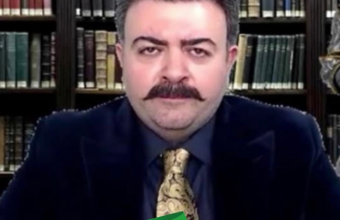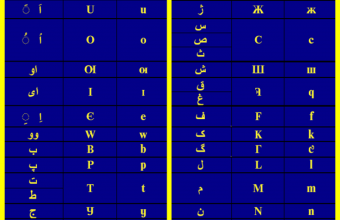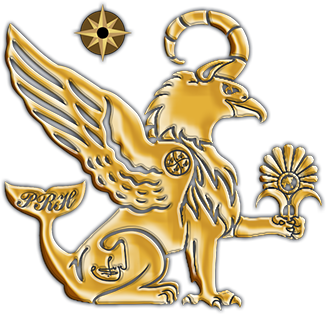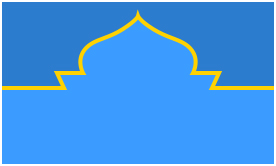Autobiography

Reza Hazeli (Kay Ashkan Ardalan Afsharnaderi)
Autobiography
I was born in the Aria Hospital of Tehran, Iran in Farvardin, 3717 Zoroastrian year, equal to 7717 Mithraic year. My mother, Niloufar Afshar Naderi, was a princess of the Afsharid dynasty in Khorasan, Iran; and my father, Eghbal Hazeli, was from the Ardalan family in Kurdistan, Iran and an officer of the Imperial Guard of Iran. Unfortunately, I was born in the darkest period of the contemporary history of my homeland, Iran, the immortal land. My love and affection for Iran started from childhood, for which I am indebted to my maternal and paternal families and relatives, particularly to my mother Niloufar Afshar Naderi, my uncle Nader Afshar Naderi, and my late maternal grandfather's cousin Mostafa Zarghamfar.
I started researching the history of Iran not so long ago from the expeditions of my maternal eleventh ancestor Nader Shah Afshar and learned about ancient Iran by reading the History of Ancient Iran by the late great man of Iranian politics and culture, Moshir od-Dowleh Hassan Pirnia. My keen interest in painting and art during childhood made me closer to the late husband of my aunt Bahram Pirnia, a prominent artist who had graduated from the College of Fine Arts, the University of Tehran, from whom I learned a lot. While studying in primary, middle, and high schools, I benefited a lot from the library and books donated by my uncle Nader Afshar Naderi. I finished my studies in Sadat Primary School, Azadi-e Mellat Middle School, and Dāneshgahe Melli (Bahonar) High School in Tehran. I endured tough times during my childhood and adolescence due to the advent of the Islamic Revolution and the outbreak of the Iran-Iraq War on the one hand, and the sufferings of my father, Major Eghbal Hazeli after the Revolution on the other hand. My father, who had just received his lieutenant-colonel’s rank from the commander, lieutenant-general Badrei, his friend who spoke the same language, was arrested immediately after the Revolution on the evening of February 11, 1979. His commander, General Badrei, was assassinated by U.S. advisers in his office. My father, who was a supporter of Mohammad Reza Shah Pahlavi and a like-minded supporter of Dr. Bakhtiar, was imprisoned and tortured many times and even sentenced to death. However, the sentence was overturned due to the traditional influence of my maternal family. Yet, he had to endure arrest and torture many times in 1989, which brought me too much suffering during my childhood and adolescence. Forty years after the Revolution, my father died on an unknown cause exactly on the 22nd of Bahman, of which we were informed by anonymous people exactly on the night of Nowruz, which was also my birthday. He was a very brave officer from the Ardalan family and a descendant of Hizo Khan Ardalan (last name Hazeli is derived from the name Hizo Khan Ardalan, and the Kurdish terms “hiz” and “hāz” mean power, and "li" is a Caucasian suffix).
My maternal grandmother, Banoo Makleman Montaser, played a prominent role in shaping my personality and instilled in me the patriotism which she had inherited from Great Montaser-al-Sultan. Moreover, my grandmother's family friend and neighbor, Senator Dr. Mehrangiz Manouchehrian, who was a great contemporary Iranian woman, played a considerable role in my acquaintance with classical Persian and European literature, which I will remember forever.
My mother, Niloufar Afshar Naderi, spared no pains for my academic progress and acquaintance with Iranian culture during my studies in Iran despite the very difficult unforgettable living conditions of Iran at that time. I will never forget the story books Shahnameh for Children, which my mother gave me as a gift. I read the two volumes of the book passionately all over the night. So implicit in the book were motherly love and the love of Ferdowsi, the great man of the Iranian culture, whom I owe for my Iranian psyche.
It was this love for Iran and more importantly the love for the truth that made me see the works of the wise mentor of Iran, Zabih Behrouz. In the early years of high school, when I was studying mathematics and physics, I met the late prominent Iranian mathematician Ahmad Birshak and came across his masterpiece, which is honorable for every Iranian. I closely examined the 3000-year-old chronology based on his theories in the book Calendar and History in Iran. The ancient Iran’s scientific accuracy and profundity of mathematics, chronology, and astronomy sounded amazing to me. Yes, I already thought of Zoroaster as a prophet and philosopher, but he has memorable works in mathematics and astronomy as well. Then I realized that the magi and philosophers traditionally used other sciences and tried to spread them, a tradition that Muslim clerics and scholars imitated and continued in the Islamic period.
The search for sources in the astronomy and chronology of ancient Iran led me to the Zoroastrians’ bookstore in Tehran and their publications, namely Forouhar Publications. There I came across a collection of studies by contemporary and ancient Iranian scientists on science and technology in ancient Iran. They included Calendar and History in Ancient Iran and Shahriari Nowruzi Calendar by Zabih Behrouz about chronology, mathematics, and astronomy of ancient Iran, the Writing System, Script and Culture by Zabih Behrouz regarding the phonetic transcription, lexicography, script, and pronunciation in ancient Iran, and other useful books published by Iran Kodeh and the pupils and followers of Zabih Behrouz such as Mohammad Moghadam, Sadegh Kia, Aligholi Mahmoudi Bakhtiari, and Pouran Farrokhzad. I also came across books written by great men such as Pourdavood, Fereydoun Joneydi, and Estiphan Panoussi, Mobed of Mobeds Firouz Azargoshasb, Nosratollah Bakhtourtash, Mohammad Ali Sajjadieh, and Professor Mehdi Farshad in literature, art, ethics, culture, architecture, management, governance, engineering and music in ancient Iran.
Although I was not lucky enough to meet professor Behrouz in person, I, fortunately, met great professor Fereydoon Joneydi. During my high school years, I first became acquainted with professor Joneydi's books as well as his Neishabour Foundation and its affiliated Balkh Publications. I met the professor for the first time in his office together with his son Afshin, and his foundation, located on Jalalieh Street, Keshavarz Boulevard, Tehran, became my second home from then on. After we talked about Iran and I asked him questions in this regard, he said that he saw love for Iran and the truth in my eyes and asked me to participate in the classes and sessions organized by the Neishabour Foundation. Although the professor was not in a good financial position, he held Shahnameh reading and Pahlavi and Avestan language classes for free, never receiving any money for his cultural work, as he considered it to be beneath his dignity.
His Shahnameh reading sessions were in place from Nowruz to Nowruz, during which he read the Shahnameh from beginning to end, criticized and interpreted it, and compared it with other ancient Iranian texts such as Avesta and Pahlavi and Persian texts. As he knew the Pahlavi and Avestan languages well, he examined the etymology of Shahnameh words and their changes from Avestan to Pahlavi and Persian from a linguistic point of view. What good words he uttered about the culture, art, literature, and knowledge of ancient Iran!
In his linguistics classes, we learned the Pahlavi language in a simple method created by the professor. We read his book Pahlavani Letter, containing excerpts of Pahlavi texts in Pahlavi script and language. We also learned the Avestan language in this way.
After and in the middle of the sessions, we would discuss important related points, write our assignments in the Pahlavi language, or sing the ancient texts in Pahlavi. Oh, how beautiful the songs were! The Kār-Nāmag ī Ardašīr ī Pāpakān, Drakht-e Asurig, the Mēnōg-ī Khrad (Spirit of Wisdom), etc. At the end of each session, the professor gave us a dictation in the Pahlavi language, took the papers, and corrected them for us.
I met one of my best and kindest friends all over my life in one of the sessions. He and I agreed on many important cultural and historical issues of Iran but disagreed on a few others. Yet, the love for Iran turned out to be the common point of our long-standing friendship.
Thus, I took advantage of the presence of the Moghan mentor of Neishabour in his moghan school for about five years from 1372 to 1377 SH when I was a high school student and a freshman, and became a moghan mentee full of passion and love for Iran. Before leaving Iran, I found myself a true lover adorned with several arts and aware of certain secrets. I had found out that:
One who knows and knows that he knows…
Will ride his horse of wisdom above the skies.
During my studies in primary, middle, and high schools in Iran, that is, from 1364 to 1376 SH, I was selected as the top student not only in my class but also in the whole school, educational district, and Tehran. After middle school, I chose the mathematics and physics field of study in high school and was admitted to several national and international universities in the Iranian University Entrance Exam, including applied mathematics at the University of Isfahan and mechanical engineering, materials engineering, and industrial metallurgy at several other universities in Tehran and Karaj.
After two years of studying in the above fields in Iranian universities, I became interested in computers and genetics. Since there was no possibility of studying in these fields in Iran and I was not in a good financial position to go to my favorite country, England, I went to Kiev, Ukraine to continue my studies. I was admitted to the International European University of Kiev in 1999 AD and studied Russian and Ukrainian language and literature for a year, completing the Padfak course with a grade of five (the highest grade in the education system of the Soviet Union and Russian commonwealth countries). Then I continued my studies in genetics at the National University of Kiev by name of Shevchenko and transferred the course units I had passed in Iran to this university. I continued my studies at that university for 3 years and then left Kiev for Moscow to research Russian language and literature at the Global Education Center of Lomonosov Moscow State University for one year. I completed that program with a grade of five.
While studying Russian language and literature at the Faculty of Biology and Geology of Lomonosov Moscow State University, I began researching genetics and informatics. In 2004, I got a B.S degree in law and political sociology from the Faculty of Sociology of that university, which was the ninth top university in the world at that time, and wrote my thesis on political regimes. Then, I completed an M.S. degree in economic sociology within two years, from 2008 to 2010, and defended my thesis about informatics and its role in globalization. I received the Russian Red Diploma and a gold medal from that university because I had received the highest possible grade, i.e. five. Meanwhile, I also published several papers in Russian about various areas of sociology in top Russian scientific and academic journals.
One of the best events of my life occurred when I was studying in Moscow. I met Professor Viktor Ivanovich Sarianidi, the greatest archaeologist of the former Soviet Union and one of the world's greatest archaeologists, the discoverer of the Bactria-Margiana Archaeological Complex (BMAC or Iranovich) and the discoverer of Golden Hoard of Bactria and the civilization of Balkh. Although I was not a student of archeology at the university, I was invited by him to attend archeology courses at the Russian Academy of Sciences as he had noticed my profound knowledge of history and linguistics. After taking the required courses in more than five one-month spring explorations and five one-month autumn explorations, I joined his team as the executive deputy to Gonur Tepe in the Karakum Desert, Turkmenistan for nearly a decade.
The result of our archeological excavations was dozens of papers and several books in Russian about the Zoroastrian and pre-Zoroastrian civilizations of Indo-Iranians, compiled and edited with my help. We were on the verge of a great discovery on a new tepe called Tayeb and I had prepared the initial report and estimate of its ancient inscriptions. Having returned from the last autumn exploration camp, Professor Sarianidi died suspiciously, after which our team fell apart and disputes arose among the members. After a while, I persuaded a group of German and Australian archaeologists to set up a new team, I realized that the Turkmen government had prohibited me from entering Turkmenistan and refused to give me a visa! These strange events made me realize the importance of Tayeb Tepe, which, unlike other tepes, had inscriptions and written documents. Anyway, after that, I decided to deal with my studies at Lomonosov Moscow State University and stop my archeological explorations.
I owe my knowledge in philosophy, law, political science, sociology, and archeology to Lomonosov Moscow State University, the highest-ranked university in the former Soviet Union and the current Russian Federation, and one of the top ten universities in the world where most Soviet scientific, cultural, and political figures as well as a large number of the Nobel Prize winners have studied. Interestingly, having been looking for the truth and scientific knowledge of various phenomena throughout my life, I found the true meaning of science in this university. The equivalent Persian words for “science” are “dānesh” and “elm”. Both the former word, which is a Persian word from the root “dānestan” and the latter, which is a word borrowed from the Arabic language and derived from the root “alama”, are equal to the English word “knowledge”. It is noteworthy that the English word “knowledge” has come from the English root “know” and has nothing to do with the word “science”. As a matter of fact, the equivalent word for “science” has not yet been made in many countries, even at the highest cultural and educational levels simply because they have failed to understand its true meaning. However, the meaning of this term, as well as its goal, are clear in many countries which have developed in “science” and technology after the Renaissance and have been reflected in their literature and culture. In Russia, for example, everyone, especially academicians know that the equivalent of “science” in Russian is “Nauka”, which is different from the word “znaniya”, meaning knowledge. It is obvious that these two concepts have been reflected in the Russian language, literature, and culture with two different terms. But what is this difference, which has been ignored by the academicians of Iran and many neighboring lands?
The reality is that “science” did not emerge in ancient Greece, ancient Iran, India, China, Egypt, or anywhere else in the ancient world; it is a new phenomenon that originated in post-Renaissance Europe, particularly in France, and what existed before was nothing but a set of information, called “knowledge”. So what is “science”?
Science is the objective study and research of the world based on facts and without subjective dependence on the researcher. Accordingly, science is science with no affix attached to it. It is on this basis that phrases such as Western science, Eastern science, European science, Christian science, Iranian science, Islamic science, and Zoroastrian science make no sense. Even if we mistakenly use the Persian term “dānesh” as the equivalent of the English term “science”, we should consider that the condition for objective study and research of the world in any field is to be already freed from one’s subjective presumptions and backgrounds which entangle the researchers, so that our subjective perspectives and presumptions may not affect the objective truth.
It is very important to understand this simple concept, and this is the very border that separates the traditional knowledge, which is mostly a set of right and wrong information mixed with love and hate as well as illusory and mythical presumptions, from modern-era science. This is because of the extensive, coherent, and advanced nature of the modern-age science, which has no precedence anywhere in the ancient world. In fact, all the knowledge of the ancient world, in comparison with the science and its progress in the contemporary world has a relation like a candle and the Sun.
Anyway, I prefer not to go into the details of this discussion but to mention it briefly, thereby keeping the oath I took at the university, which included: “Science is the only way to understand the truth of the world.”
I married my wife Irina Baklanova in 2007. Having graduated from the university, I migrated to the United States in late 2009 to work in the area of information technology and information science. I worked for a while in California and in Washington. My son, Arian, was born at Cedars-Sinai Medical Center, Los Angeles in 1989. While studying in Moscow, I established the Arian Company Group in the free trade zones of Dubai to invest in the Dubai housing market and produce software. It brought me very good profit, making me get rid of the employee life that by no means accorded with my nature.
Unfortunately, the United States encountered a huge economic crisis when I was there. All the stock markets crashed and the stock and property lost up to 70% of their value. Wages fell and I had no reason to stay there, so I decided to continue my studies at my previous university in Moscow. From early 2011 to 2013, I was a PhD student in social philosophy at the Faculty of Sociology of Lomonosov Moscow State University and wrote my doctoral dissertation on the philosophy of community and migration and its economic and political effects in Russia.
When the United States was in an economic crisis, Russia became the second most powerful economy after China, with annual economic growth of 7%. This brought me plenty of investment opportunities in Russia.
Moreover, during my many travels to over thirty countries across the world, I got to know about Australia and found its people as Americans with European and British culture. I decided to migrate to that country and started the migration process in 2012 until I got residency in that country in 2013.
My consecutive trips provided me with unique opportunities, including visiting the most important and famous museums in the world, especially parts of them which included inscriptions and scripts. I will never forget the State Hermitage Museum in Saint Petersburg, the British Museum in London, the Louvre Museum in Paris, the Vatican Museum in Rome, the Prado Museum in Madrid, the Pushkin State Museum of Fine Arts in Moscow, the Metropolitan Museum of Art in New York, the National Gallery of Art in Washington, the Acropolis Museum, the National Archaeological Museum of Athens, the National Museum of Egyptian Civilization in Cairo, and the Museum of Ancient Iran in Tehran. The artistic masterpieces of human history in these museums have directly and indirectly contributed to my thoughts and prepared me to put forward the great philosophical, sociological, linguistic, political, and historical theories. I first decided to teach at one of the Australian universities in 2013 and tried several different universities, but as I returned from the classrooms and lectures, I remembered the words of my professor, Dr. Fereydoon Joneydi, who insisted that we should educate Bahram, Khashayar, Hassan and Hossein rather than Mike, John, and Betty; we should dedicate ourselves to Iran, as the West does not need us and it is not an honor for Iranians to educate Western people. With such a mindset, Dr. Fereydoon Joneydi dedicated himself to the Iranian youth at the Neishabour Foundation and rejected the invitation of the Department of Iranian Studies of the University of Naples, Italy for teaching there. To serve my homeland in a better way, I preferred to make myself financially independent instead of teaching at Australian universities, which is very time-consuming and leaves no time for me to deal with Iran and its youth and culture. To become economically independent, I established the software and media company of Mehr Global in Australia, and then freely began researching the culture, art, literature, philosophy, architecture, and various sciences of ancient Iran. The result of my efforts was the “Eternal Heritage of Ancient Iran” collection, which comprised one hundred and twenty studies and short documentaries about ancient Iran. This great cultural work, which is the largest project of Iranian culture after Ferdowsi's Shahnameh, consists of films, twenty-one of which have been made and the rest are under production. Having seen people’s passion in the Cyrus the Great ceremony in Pasargadae, I converted from a researching sociologist into a practicing one from 2015 in order to develop the discourse of Iranianism in the politics of Iran and Iranian society and civilization and thus made myself public. Moreover, in 2016, especially after separation from my ex-wife, I published the “Manifesto of Iranzamin School of Thought or Modern Iranian Nationalism from the Civilizational Perspective”, which I later changed to "Iranzamin School of Thought", and set forth many political, philosophical, historical, linguistic and social theories through a variety of papers, books, speeches, and debates on various Persian websites and networks, which has been unprecedented in the history of Iran. The main theories that I put forward for the first time in Iran and partly for the first time in the world include the following:
- The Theory of Iranian Civilization and the Theory of the Establishment of the Union of Iranian Countries
- The Theory of Selective Imperial System as a convergent theory for the advocates of the parliamentary monarchy and the Republicans
- The Theory of Iranian Revolution
- The theory of changing the script in Iran into Iranic Script
- The theory of reforming the deviation of Iranian civilization from Islamic Arab savagery to Indo-Iranian and European Super-civilization
- The Theory of Civilizational Nationalism
- The theory of Indo-Iranian and European Super-civilization
- The Theory of Ontology of Time
- The Theory of Revival of Zorvanist-Mithraic Philosophy
- The theory and scientific definition of the Iranian nation and people
- The theory of Decentralized Integrated Government for Iran
- The theory about the role of Rome and the Vatican in the emergence and spread of Islam from the beginning to the present
- Bistatus theory to solve the Kurdish problem in the Middle East and a number of other theories of humanities that are unique in their kind not only in Iran but also in the world.
In this way, I gradually became the most prominent philosophical, political, historical, and sociological theorist of contemporary Iran. My theories were publicized so rapidly that even the Iranian elites have found it difficult to understand them fully. I hope to remain on this path for the rest of my life, and that my endeavors on this path will be accepted and considered.








